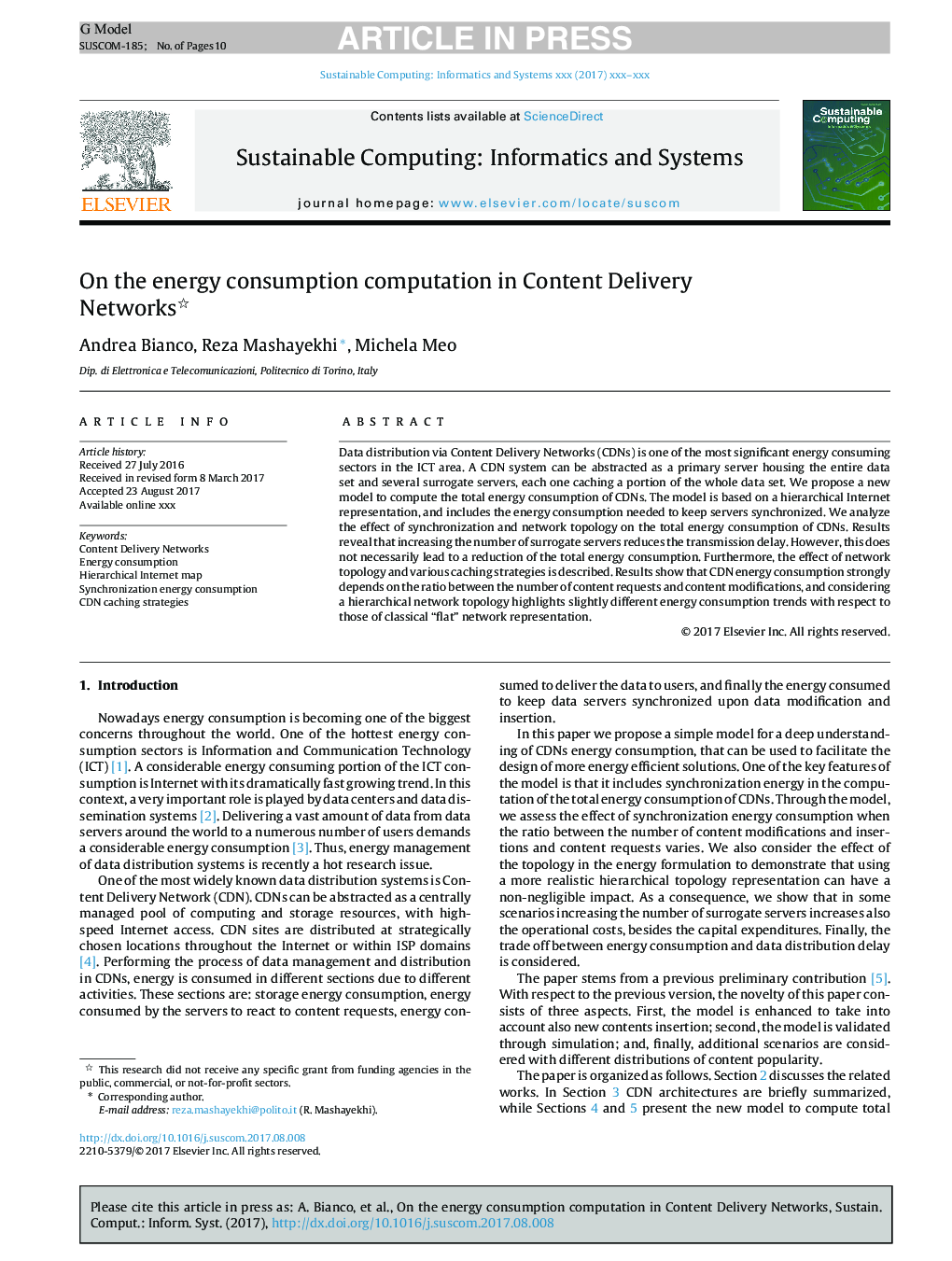| Article ID | Journal | Published Year | Pages | File Type |
|---|---|---|---|---|
| 6903041 | Sustainable Computing: Informatics and Systems | 2017 | 10 Pages |
Abstract
Data distribution via Content Delivery Networks (CDNs) is one of the most significant energy consuming sectors in the ICT area. A CDN system can be abstracted as a primary server housing the entire data set and several surrogate servers, each one caching a portion of the whole data set. We propose a new model to compute the total energy consumption of CDNs. The model is based on a hierarchical Internet representation, and includes the energy consumption needed to keep servers synchronized. We analyze the effect of synchronization and network topology on the total energy consumption of CDNs. Results reveal that increasing the number of surrogate servers reduces the transmission delay. However, this does not necessarily lead to a reduction of the total energy consumption. Furthermore, the effect of network topology and various caching strategies is described. Results show that CDN energy consumption strongly depends on the ratio between the number of content requests and content modifications, and considering a hierarchical network topology highlights slightly different energy consumption trends with respect to those of classical “flat” network representation.
Related Topics
Physical Sciences and Engineering
Computer Science
Computer Science (General)
Authors
Andrea Bianco, Reza Mashayekhi, Michela Meo,
